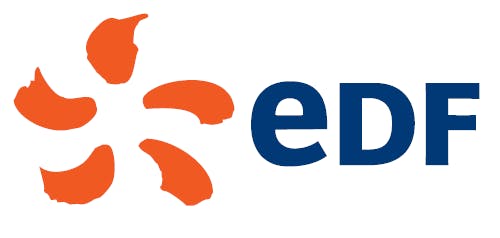4F – Risk of supply/demand imbalance within EDF
Summary: A reduction in the production of nuclear power, combined in particular with a massive return of alternative suppliers’ customers to EDF, could create an imbalance between the supply of and demand for electricity within EDF’s scope, which could result in significant purchasing requirements on the wholesale markets. Such a situation could have financial consequences for the Group.
Criticality: ![]() Intermediate
Intermediate
a) Context
The risk of imbalance between electricity supply and demand at EDF for the winter of 2022-23 and following winter is greater than usual, particularly due to a lower winter availability of the EDF nuclear power stations and the return of many customers of alternative suppliers to EDF. This situation of reduced availability arises from the combination of an intensive Grand carénage industrial programme, with unfavourable events due to the Covid crisis in 2020, and the stress corrosion identified. In the event of a production shortfall, high market prices would increase the cost of EDF buying back the missing production. Moreover, high market prices push private customers to choose the regulated sales tariff.
Given the thermal sensitivity of the consumption of some of EDF’s customers, such a situation could mainly occur during a major cold and it would be worsened, should circumstances dictate, in a situation of low wind affecting wind power generation and the liquidity of the short-term markets. This risk cannot therefore be anticipated beyond a few days, depending on the weather forecasts.
b) Main risks
In the event of a proven imbalance, EDF may be compelled to purchase very sizeable energy volumes on short-term markets, at very high prices. The consequence for EDF is therefore financial. If market liquidity is insufficient to allow EDF to make the purchases necessary for balancing, the financial risks are increased because they depend on the settlement price of imbalances, which can be much higher than market prices.
c) Control actions
As part of preparations for winter, EDF has implemented numerous preventive actions and actions to control that risk, working on both production and demand.
In order to maximise available production in winter, EDF has in particular conducted a detailed review of the scheduling for halting nuclear units, anticipating or delaying stoppages to free as much capacity as possible for weeks of heavy demand. Operating waivers have been obtained to increase the authorised operating limits for the Cordemais coal-fired units.
On the demand side, EDF has formalised by contract new load-shedding volumes with its customers, conducted communication campaigns to foster energy restraint, re-launched at the Government’s request the TEMPO option of the TRVE charging scheme, making for lower consumption on days of heavy strain on the supply and demand equilibrium.
Finally, if the imbalance is such that the French electricity system is no longer able to balance itself, RTE will have to implement the various contracts and back-up mechanisms available to it in real time (contracted load shedding with large consumers, temporary lowering of the electricity network voltage plan, temporary and targeted load shedding).
The communication exercise conducted by the government authorities with RTE and EDF has had considerable effects since an appreciable drop (by some 10%) has been observed in French consumption adjusted for temperature variation.
4G – Risk of blackout
Summary: A blackout, i.e. a widespread power grid incident, in a territory served by the Group, could have consequences for the Group’s activities, financial position and reputation.
Criticality: ![]() Moderate
Moderate
a) Main risks
The Group may be faced with a blackout, a widespread network incident of considerable scale, or be involved in such incident, even if the triggering event occurred on a network not operated by EDF or was attributable to a third party.
Unlike the risk of imbalance between supply and demand, the potential causes of a blackout are due to rapidly-occurring phenomena: accidental power-supply or transmission failure, cascade failures on the transmission network, interconnection problems. The initiating event is usually a major failure in an essential equipment item for transport or, more rarely, for production, in specific, aggravating circumstances which, by triggering automatic protective devices, cause the rapid shutting down of a significant portion of the electrical system.
Unforeseeable supply breaks of this kind could create major disruption in all or part of the country, potentially lasting several hours. Thus, a blackout may negatively impact the Group’s reputation among its customers and all its stakeholders, as well as impacting its financial position.
b) Control actions
Controlling this risk is at the heart of RTE’s mission, as it is responsible 24 hours a day for managing the French electricity system, and balancing electricity supply and demand in France, particularly in real time. The resources implemented by RTE fall within the framework defined by the public authorities and they comply with the policies ordinary to European TSOs and established within the framework of ENTSOE (European Network of Transmission System Operators for Electricity).
EDF’s contribution to risk management, over and above its regulatory obligations and in accordance with the public service contract and its responsibility as a balance manager, lies in its commitment to:
- respond to RTE’s calls for tenders for the constitution of reserves;
- contract with RTE to enable coordinated planning of generation unit shutdowns and network interventions;
- guarantee compliance of the performance of its power plant and the automated mechanisms associated with the standards and formalised by contract commitments between EDF and RTE.
